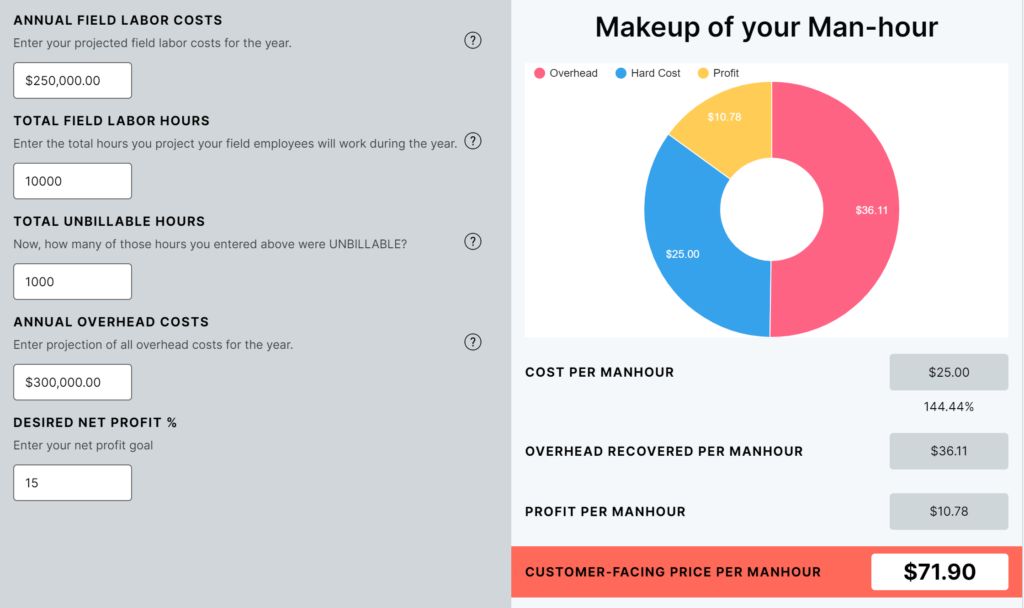How to Deal with Unbillable Labor in a Landscaping Business

How do you deal with unbillable labor in a landscaping business?
How much unbillable labor is too much? What even is unbillable labor?
I’m going to continue my theme of budgeting-related topics here at the end of the year, to get your minds rolling and make sure you have your bases covered as you build your budgets for next year.
So, what is unbillable labor?
Unbillable labor is any labor that your business needs to pay for, but you can’t turn around and bill a customer for that labor. Making it “unbillable”.
Ie, it’s a rainy day, so instead of sending your team out to the job site, they tinker around the shop, cleaning trucks, organizing tools, etc. You’re still paying them, they are still on the clock, but you can’t charge a client for that labor.
Or you take your team to a trade show.
Or you have a team meeting.
All of these things, your team is “on the clock”, but you can’t bill a customer.
What is not unbillable labor?
I have conversations with contractors occasionally where they treat drive time as unbillable labor. I personally do not count drive time as unbillable labor. Instead, drive time gets factored into the quote of every job I sell, so the windshield time is actually billable. Billable to the job we are driving to.
My logic is “someone has to pay for that time, it may as well be the customer we are driving to.
But that same logic is really difficult to apply to team meetings, rain days, etc. It’s too unpredictable. Which job should it get put to? And that’s impossible to anticipate in the estimating phase of that job.
Drive time can be anticipated and calculated though, and added to the total man-hours of the job. Making it “billable”.
How much unbillable labor is too much?
Unbillable labor is a sneaky thing because if you aren’t tracking it, it’s kind of invisible. It doesn’t show up on a P&L statement, can’t look at your payroll reports, anything, to get an idea of how much unbillable labor you have.
Unless you track it.
But back to how much is too much?
At SynkedUP we see an average of 10-15% of total man-hours on payroll be unbillable in the average team and company.
Personally, I’d like to get it to 5-10%.
But the only way you can get better is to track it.
What you measure, improves.
How do you track it?
Simply create a job that your team can clock into any time they are doing anything unbillable.
Then make sure everyone on your team is on the same page as to what is unbillable vs what isn’t. Come up with a written list and share it with the team, so it’s easy to not get confused.
Then make sure that anytime that you’re team is doing anything defined as unbillable, they are clocked into that unbillable job.
Make sure everyone is doing it the same way, every time. It’s got to be consistent.
At the end of the year then, it’ll be super easy to tell. Let’s say you had a total of 10,000 hours on payroll, and 1,000 of them were tracked to an unbillable job. 10% of your total payroll hours were unbillable.
How much does unbillable labor actually cost?
It can be a silent profit thief for sure.
You can actually use this quick n dirty little man hour price calculator to see the impact it has.
You can see how in the hypothetical model of a company that has 10,000 hours a year on payroll, with no unbillable man-hours plugged in, the man-hour price is $64.71

But when you add in 1,000 unbillable man-hours, (which would be modest 10% unbillable) the man-hour price jumps all the way up to $71.90!
A $7/hr difference across 10,000 hours of field labor!

So there, that’s why it’s so important that you track this. If you aren’t considering it at all in your math when coming up with your hourly rate, it could literally be a big enough of a deal that it’s stealing all your profits.
Go ahead, have a little fun, and play with that man-hour calculator 🙂 It’s kind of fun to mess with it and see what impacts what.
Hit reply here or comment on the post with any questions or comments!
Weston Zimmerman
SynkedUP CEO

